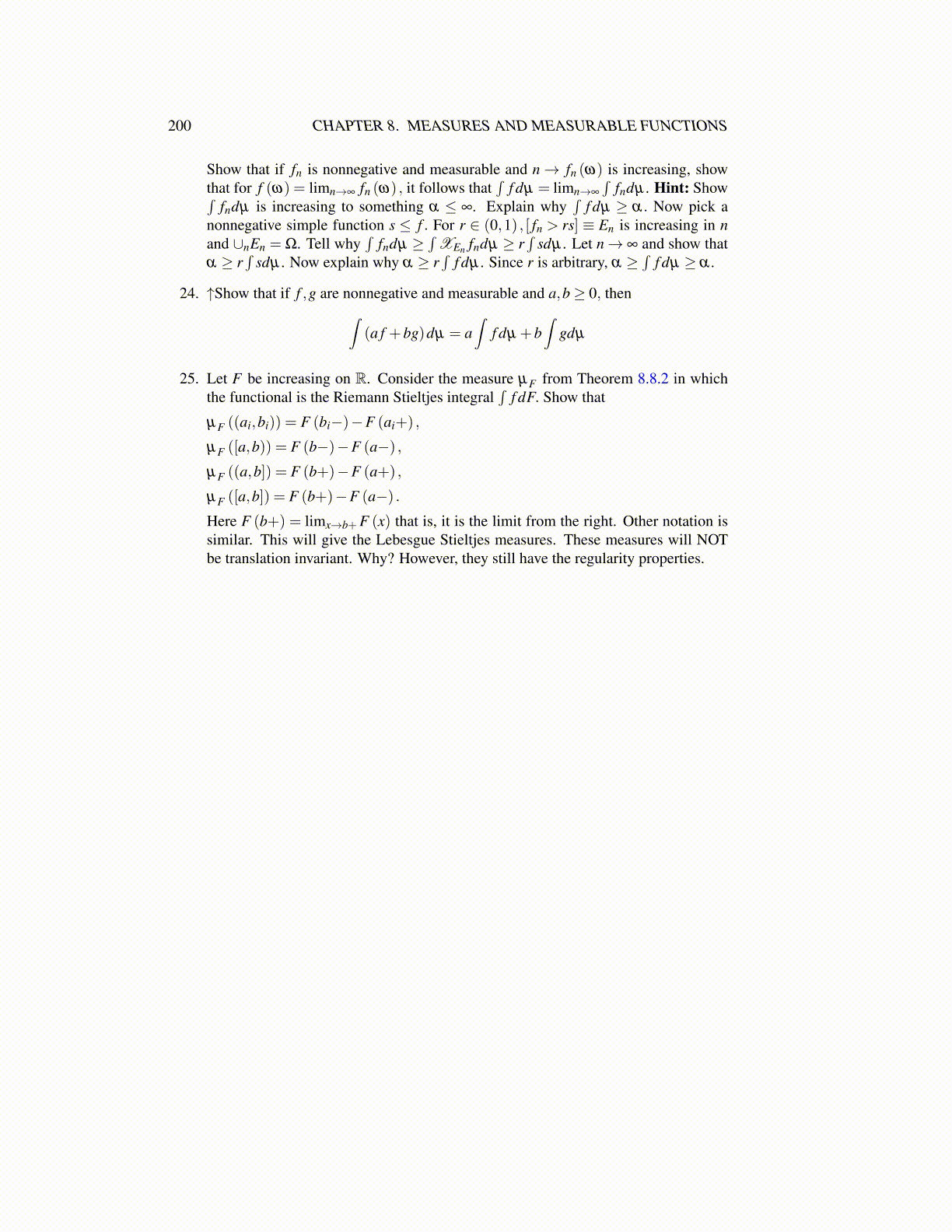
200 CHAPTER 8. MEASURES AND MEASURABLE FUNCTIONS
Show that if fn is nonnegative and measurable and n→ fn (ω) is increasing, showthat for f (ω) = limn→∞ fn (ω) , it follows that
∫f dµ = limn→∞
∫fndµ . Hint: Show∫
fndµ is increasing to something α ≤ ∞. Explain why∫
f dµ ≥ α. Now pick anonnegative simple function s ≤ f . For r ∈ (0,1) , [ fn > rs] ≡ En is increasing in nand ∪nEn = Ω. Tell why
∫fndµ ≥
∫XEn fndµ ≥ r
∫sdµ . Let n→ ∞ and show that
α ≥ r∫
sdµ . Now explain why α ≥ r∫
f dµ . Since r is arbitrary, α ≥∫
f dµ ≥ α .
24. ↑Show that if f ,g are nonnegative and measurable and a,b≥ 0, then∫(a f +bg)dµ = a
∫f dµ +b
∫gdµ
25. Let F be increasing on R. Consider the measure µF from Theorem 8.8.2 in whichthe functional is the Riemann Stieltjes integral
∫f dF. Show that
µF ((ai,bi)) = F (bi−)−F (ai+) ,
µF ([a,b)) = F (b−)−F (a−) ,µF ((a,b]) = F (b+)−F (a+) ,
µF ([a,b]) = F (b+)−F (a−) .Here F (b+) = limx→b+ F (x) that is, it is the limit from the right. Other notation issimilar. This will give the Lebesgue Stieltjes measures. These measures will NOTbe translation invariant. Why? However, they still have the regularity properties.